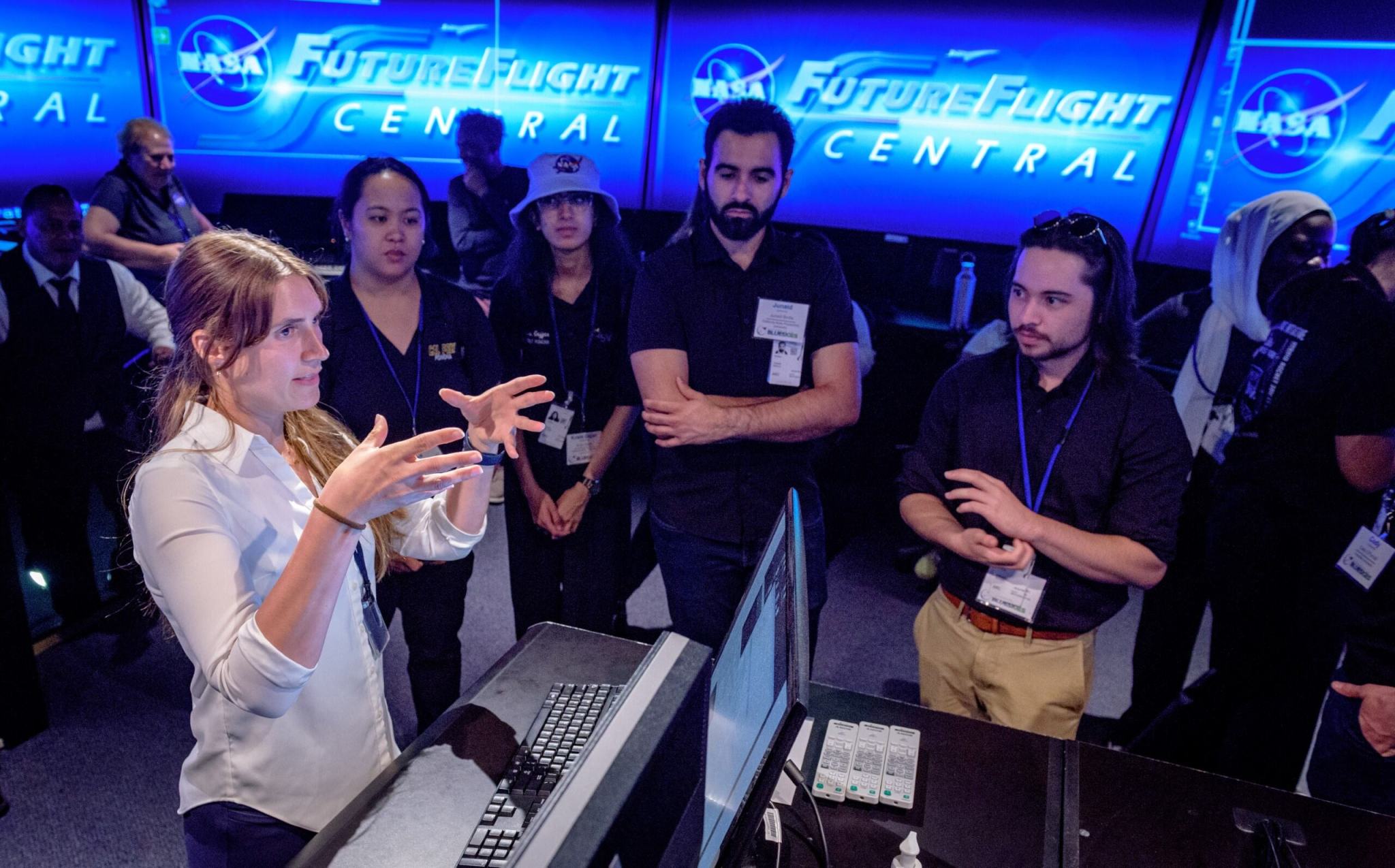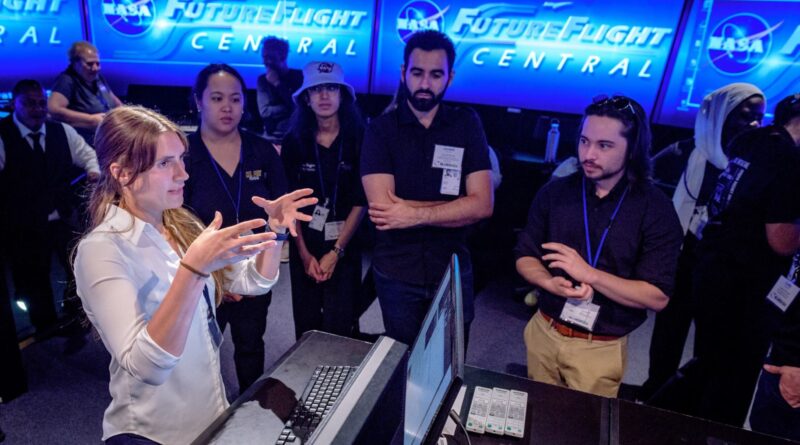College Teams Face Planes for Agriculture in 2025 Competition

Students in the 2024 Blue Skies Competition toured NASA’s Ames Research Center during the Summit.
NASA
In the 2025 Gateways to Blue Skies competition, the theme is AgAir: Aviation Solutions for Agriculture. NASA is asking joint teams to research new or improved flight capabilities that could help the agricultural industry by improving productivity, efficiency, environmental impact and extreme weather/climate resilience.
The agricultural industry plays an important role in providing food, fuel and fiber for the world’s population; however, it faces several challenges, including limited resources and increasing demands to reduce the impact of agriculture on the environment while increasing its climate resilience. Due to the increasing world population, the demand for food is increasing, which puts pressure on available resources such as arable land, water and energy. Climate change exacerbates these problems by leading to unpredictable weather patterns, extreme temperatures and natural disasters that affect crop and livestock yields. NASA Aeronautics is committed to expanding its efforts to help business, industry and government partners develop aeronautical systems that can improve agricultural productivity.
“This is an area where new aviation technologies can impact an industry that is very important to the health and sustainability of our planet,” said Dr. Bradley Doorn, Program Director in NASA’s Applied Sciences field. “The agricultural industry is already at the forefront of the adoption of technology to support the growing needs of production, from quantity to quality to withstand increasing environmental and social pressures. has a lot of potential to help with a wide range of applications, especially within the aviation industry. Be excited to see what students think about this topic.”
Sponsored by NASA’s Aeronautics Research Mission Directorate’s (ARMD’s) University Innovation (UI) Project, the Gateways to Blue Skies (aka Blue Skies) competition encourages diverse, multidisciplinary teams of college students to brainstorm ideas. unique status of systems and analysis to the purpose of the flight. a problem seen every year. It aims to include as many students as possible – from all backgrounds, majors, and college levels, freshmen to graduate.
In this competition, students participating in teams of two to six will choose an aircraft system or systems that can be used in a specific agricultural area. Contestants must choose technologies that can be used in 2035 or sooner.
Teams will submit a five- to seven-page proposal and an accompanying two-minute video, which will be judged through a competitive evaluation process by NASA and industry experts. Up to eight finalist teams will receive up to $8,000 each to further their research to create a final research paper and infographic, and attend the 2025 Blue Conference Skies will be held in May 2025 at NASA’s Armstrong Flight Research Center. Forum winners who meet the eligibility criteria will be offered the opportunity to study with NASA Aeronautics in the academic year following the Forum.
“As we enter our fourth year, we continue to see growing enthusiasm at NASA and across universities for the Gateway to Blue Skies Competition,” said Steven Holz, UI Project Manager and Blue Skies Chair. Skies. “Aeronautical solutions to this year’s challenge could have far-reaching implications for the future of the agricultural industry, which is the foundation of our daily lives.”
Teams interested in participating in the contest should review the contest guidelines and eligibility requirements posted on the Blue Skies contest website, https://blueskies.nianet.org. Teams are encouraged to submit a non-binding Notice of Intent (NOI) by 22 October 2024, via the website. Providing an NOI ensures that teams are kept up to date with competitive news. The presentation and video are from March 17, 2025.
Blue Skies is funded by NASA’s Aerospace Exploration Agency (ARMD’s) University Innovation Project (UI) and managed by the National Aerospace Institute (NIA).
For complete contest details, including planning guidelines and restrictions, applicable materials, and application information, visit the Blue Skies website at:
/ Press Release. These articles from the organization/authors may be contemporary, and edited for clarity, style and length. Mirage. The content does not take the positions or sides of the organizations, and all opinions, positions, and decisions expressed here are those of the (authors). See more here.
#College #Teams #Face #Planes #Agriculture #Competition
